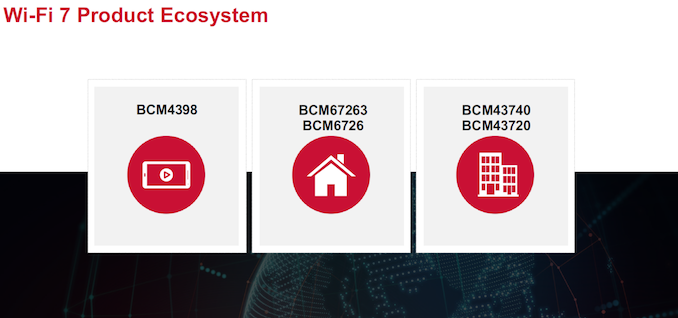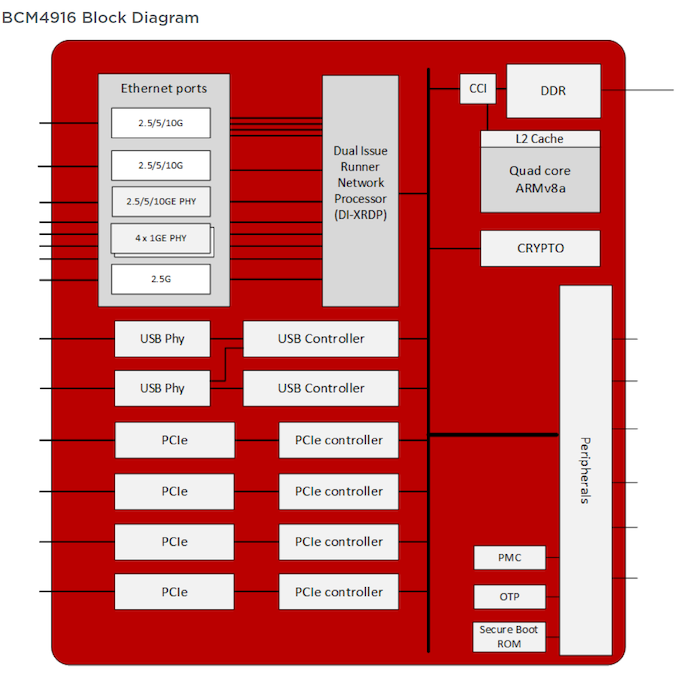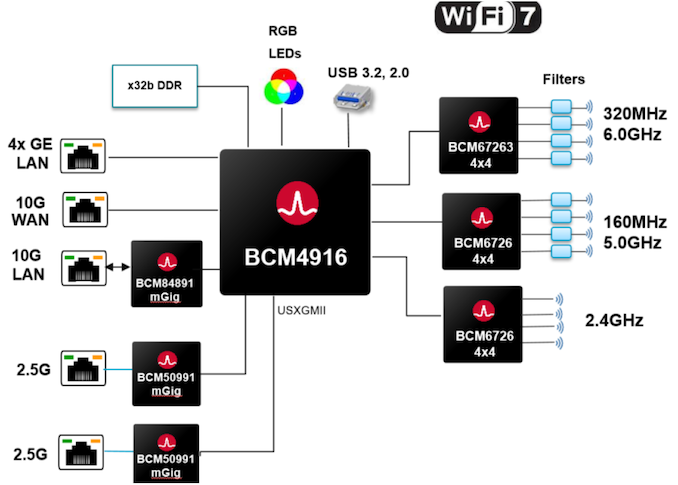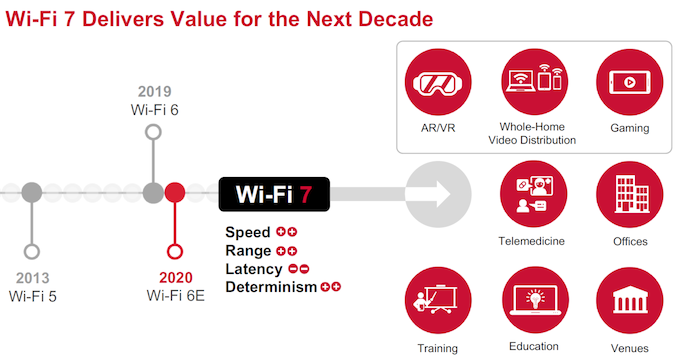Broadcom Launches Wi-Fi 7 Portfolio for Access Points and Client Devices
The last few years have seen heightened consumer focus on wireless networking. The industry has also been quite busy, enabling the operation of Wi-Fi 6 (802.11ax) in the 6GHz band with Wi-Fi 6E. In parallel, the 802.11 Working Group had started work on 802.11be with a focus on extremely high throughput (EHT). Wi-Fi 7 is set to become the consumer-facing moniker for 802.11be.
802.11be aims to achieve high throughput primarily through a combination of three aspects:
- Support for up to 16 spatial streams
- Support for 320MHz-wide channels (with operation in 2.4 GHz, 5 GHz, and 6 GHz bands)
- Support for 4096-QAM (4K-QAM) resulting in better utilization of available spectrum (a faster modulation / coding scheme).
Theoretically, these aspects allow for up to around 46 Gbps of wireless throughput. 802.11be also aims to enable usage of Wi-Fi for real-time applications by including features for low-latency communications such as Multi-link operation (MLO). This allows a client and an access point to simultaneously communicate over multiple channels that might even belong to different bands. Interference and co-existence with non-Wi-Fi users of the same spectrum is handled using automatic frequency coordination (AFC).
A number of additional features targeting these two thrust areas are under consideration for the final standard. However, multiple silicon vendors have already started introducing silicon supporting variations of the aspects included in the first 802.11be draft specifications.
Mediatek was one of the first vendors to demonstrate working 802.11be-compliant silicon earlier this year. Though Mediatek indicated that the products would be marketed under the Filogic lineup, concrete technical details and part numbers were not announced. At MWC 2022, Qualcomm provided details of their 802.11be client silicon targeting mobile devices. The FastConnect 7800 is expected to become available in H2 2022, and integrates Bluetooth 5.3 support with key Wi-Fi 7 features.
Broadcom is announcing a comprehensive portfolio of products targeting various Wi-Fi 7 markets today.
The table below summarize the key features of the products targeting access points. All of these support 4K-QAM and Multi-Link Operation.
| Broadcom 802.11be (Wi-Fi) Access Point Radios Specifications | ||||
| BCM67263 | BCM6726 | BCMN43740 | BCMN43720 | |
| Target Market | Residential Wi-Fi APs | Enterprise Wi-Fi APs | ||
| Operational Band | 6 GHz | 2.4 GHz (or) 5 GHz (or) 6 GHz | ||
| Stream Count | 4 | 2 | ||
| Max. Channel Width | 320 MHz | 160 MHz | 320 MHz | 160 MHz |
| PHY Rate | 11.5 Gbps | 5.75 Gbps | 11.5 Gbps | 2.88 Gbps |
The AP products support AFC in order to ensure that 6GHz range is not affected (the APs are mandated to receive regularly scheduled clearance from a central authority to prevent interference with 6 GHz spectrum users). Broadcom has applied to be an AFC operator and will offer AFC service with their chips. This will use Open AFC code. Broadcom also believes a vibrant Wi-Fi 7 ecosystem requires an AFC service that the device makers can use independent of the chip vendor. Organizations such as the Wi-Fi Alliance, and Wireless Broadband Alliance have applied to be AFC operators, with Open AFC already gaining traction in this.
Tying these together in Broadcom's Wi-Fi 7 router reference design is the BCM4916 network processor. This ARM v8-compatible quad-core SoC includes a dual-issue Runner packet processor (DI-XRDP), an integrated NBASE-T (up to 10G) Ethernet PHY for WAN or LAN, four integrated 1GbE PHYs, three USXGMII interfaces, multiple USB ports, and a 32-bit DDR3/DDR4 DRAM interface.
The quad-core CPU is a custom Broadcom design with 64KB of L1 cache and 1MB of L2 cache, providing up to 24K DMIPS horsepower. Without the knowledge of exact clock speeds, it is difficult to compare against the standard Cortex cores from ARM. Based on the DMIPS number, this appears to slot in-between a Cortex-A53 and an A57, but does not include the ARM v8.2 features of the A55.
Broadcom's customers can play around with the radio configuration in the above design to create products at different price points. Tri-band support becomes compulsory in Wi-Fi 7. The extremely high throughput enabled by this means that 10G support on the WAN/LAN side and NBASE-T support on the LAN front will become the de-facto standard for routers and APs in the coming years.
Broadcom is also introducing the BCM4398 - an integrated Wi-Fi 7 and Bluetooth 5 combo chip targeting smartphones and other mobile applications. It supports two streams of Wi-Fi 7, channel width of up to 320 MHz, and a 6.05 Gbps PHY rate. On the client side, one of the key user-visible updates is low-latency operation. Broadcom claims that the BCM4398 can achieve sub-millisecond latencies for lightly congested environments in the 6 GHz band. The client multi-link operation feature can keep both uplink and downlink latencies between 5 and 10ms in situations where both 5 and 6 GHz bands are highly congested. This provides determinism for AR/VR knowing that worst case latencies will be down to a few milliseconds even during heavy congestion.
Broadcom is the first vendor to announce a complete portfolio of Wi-Fi 7 products, with sampling for key customers already in progress. The new products should give end-consumers a taste of the values delivered by Wi-Fi 7 for different applications a few quarters from now.
from AnandTech https://ift.tt/DOjaTnY













Post a Comment